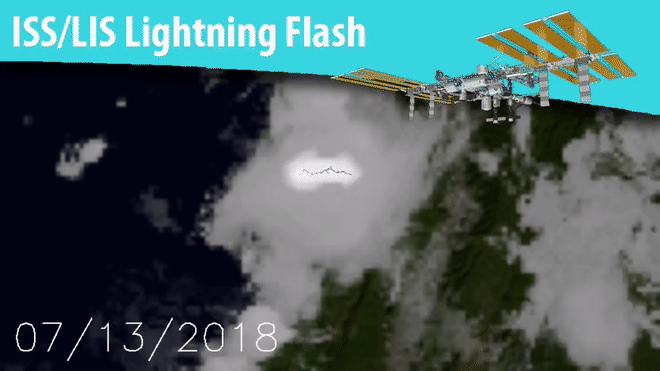
This animation is from July 13, 2018 and observes a single flash over northwestern Columbia and lasted for almost 1.5 seconds. The flash was observed by the International Space Station Lightning Imaging Sensor (ISS-LIS) that is the flight spare for the original Tropical Rainfall Measuring Mission (TRMM) satellite. This instrument has been extremely valuable for validating the Geostationary Lightning Mapper (GLM) on the new GOES-R series of satellites (GOES-16 and -17) as the GLM is based on the LIS design and the 20+ year heritage of NASA space-based lightning mapping technologies. The key value of ISS-LIS, however, is its orbit that allows the detection lightning in parts of the globe that have not been observed since the OTD era (April 1995-March 2000). In addition, the ISS-LIS has a comparable altitude to TRMM-LIS and can measure lightning in the mid-to-high latitudes with approximately the same precision as TRMM-LIS in the low latitudes. This enables scientists to examine how lightning varies by region and changes according to the local climate regime. The case shown here is one of the largest flashes observed by ISS-LIS so far. This is a propagating flash that develops from east to west with notable recoil processes resulting in a wave of radiant energy (i.e., light being observed by the instrument) retracing the lightning channel (dark lines). LIS provides insights into lightning physics that will be valuable for understating electrical processes in the most unique thunderstorms around the world from oceanic convection to the extremely shallow storms that develop with super-cold Siberian cold air outbreaks. This animation was created by GHRC User Working Group member Dr. Michael Peterson.






